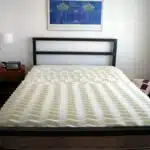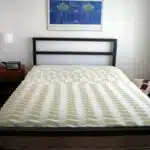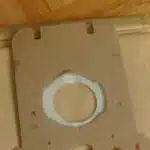Maintaining a clean and hygienic sleeping environment is crucial for good health and well-being. A mattress is an essential part of our daily lives, providing us with a comfortable sleeping surface. However, over time, mattresses can accumulate dirt, dust, sweat, and other debris that can compromise their functionality and cause various health issues. Therefore, it is essential to know how to properly clean a mattress to ensure it remains in good condition.
As a mattress cleaning expert, I have encountered several cases where individuals neglect the importance of cleaning their mattresses regularly. The lack of proper maintenance not only affects the longevity of the mattress but also poses serious health risks such as allergies, asthma attacks and skin irritation. In this article, I will share some effective ways on how to properly clean a mattress in order to maintain its quality and hygiene standards. By following these tips, you can ensure that your mattress retains its original condition while providing you with a healthy and peaceful sleeping environment.
The Importance Of Mattress Cleaning
Maintaining proper mattress hygiene is crucial to ensuring a good night’s sleep and overall health. Regular cleaning not only helps extend the lifespan of your mattress but also eliminates harmful microorganisms that may be present on its surface. The benefits of regular cleaning are numerous, including improved air quality, reduced allergens, and the prevention of unpleasant odors.
On the other hand, neglecting mattress hygiene can lead to a host of unwanted consequences. Unclean mattresses can harbor dust mites, bacteria, and fungi that can cause various health problems such as skin irritation, respiratory issues, and even infections. Additionally, failing to clean your mattress regularly can lead to the accumulation of sweat stains and other unsightly marks that may be difficult or impossible to remove.
To maintain optimal health and comfort while sleeping, it is crucial to understand the risks associated with unclean mattresses. While you may not always be able to see or smell the effects of poor mattress hygiene, they are undoubtedly present. By taking steps to regularly clean your mattress, you can eliminate these risks and enjoy better sleep quality overall.
Understanding The Risks Of Unclean Mattresses
Transition: As we have established, regular mattress cleaning is crucial for maintaining a hygienic sleeping environment. However, neglecting this task can lead to a range of risks and health consequences.
Unclean mattresses can harbor dust mites, bed bugs, and other allergens that can trigger asthma, allergies, and other respiratory problems. These tiny creatures feed on dead skin cells shed by humans and pets, leaving behind fecal matter that accumulates in the mattress over time. In addition, moisture from sweat and spills can seep into the mattress, creating an ideal breeding ground for mold and bacteria. Exposure to these contaminants can result in skin irritation, infections, and even serious illnesses.
Furthermore, an unclean mattress also poses a risk of physical injury. A sagging or lumpy mattress not only affects sleep quality but also increases the likelihood of falls or accidents. Additionally, if left unchecked for too long, stains on a mattress may become permanent and more difficult to remove with time. Hence it is essential to address any spills or stains as soon as possible before they set in.
Transition: Now that we understand the risks associated with unclean mattresses let us explore some signs that suggest your mattress requires cleaning.
Signs That Your Mattress Needs Cleaning
Regular cleaning of your mattress is essential to ensure that it remains hygienic and free from dirt, dust, and other allergens. Mattresses can accumulate a lot of debris over time, including skin cells, hair, sweat, and body oils. All these can provide the perfect breeding ground for bacteria and dust mites, which can cause allergies, infections and even respiratory problems.
The importance of regular cleaning cannot be overstated when it comes to maintaining a healthy sleeping environment. Dirty mattresses can pose potential health risks to you and your family due to the accumulation of allergens. Symptoms such as coughing, sneezing, watery eyes or itchiness can indicate that your mattress needs cleaning. It is advisable to clean your mattress at least twice a year or more often if someone in your household has allergies or asthma.
Neglecting to clean your mattress regularly can ultimately lead to an accumulation of harmful bacteria that could cause serious health problems. The best way to keep yourself and your loved ones safe is by investing in regular cleaning routines for your mattresses. Not only will this help keep you healthy but also prolong the lifespan of your bedding investment while providing you with a good night’s sleep.
To prepare your mattress for cleaning, there are specific steps that you need to follow carefully.
Preparing Your Mattress For Cleaning
As you embark on the journey of disinfecting your mattress, it is crucial to prepare it beforehand. Preparing your mattress means removing any bedding, sheets, and pillows from its surface. This way, you can have a clear view of all the stains and debris that need cleaning.
Before you begin cleaning your mattress, ensure that you have access to all the necessary tools such as a vacuum cleaner with an upholstery attachment, a mild detergent or cleaning solution, and a white cloth. A white cloth is important because it allows you to see the dirt and grime that has been removed from your mattress.
In addition to having the right tools for cleaning your mattress, it is also important to choose the right time for this activity. It is advisable to clean your mattress on a bright sunny day when there is ample sunlight streaming into your room. This makes it easier to spot any stains or spots that might be missed during regular cleaning. With these tips in mind, let us now move on to vacuuming your mattress.
Vacuuming Your Mattress
- To properly clean a mattress, it is important to begin by preparing the surface for vacuuming.
- This includes removing all mattress covers, sheets, and pillows, and blotting the mattress with a clean, damp cloth to remove any surface dirt or debris.
- The mattress should then be vacuumed using a soft brush attachment and taking care to reach every crevice and corner.
- A handheld vacuum may also be used to target areas that are more difficult to reach.
- After vacuuming, the mattress should be treated with an appropriate cleaning solution, appropriate for the mattress material.
- Finally, the mattress should be allowed to dry completely before replacing the covers and sheets.
Preparing The Mattress
As a mattress cleaning expert, I understand the importance of preparing your mattress before vacuuming it. It is essential to properly prepare the surface to ensure that the vacuum can effectively remove dirt and debris from deep within the fibers. Cleaning a mattress may seem like an overwhelming task, but with the right tools and best cleaning practices, it can be done efficiently.
To begin, remove all bedding and linens from your mattress. Before vacuuming, use a soft-bristled brush or handheld vacuum attachment to gently loosen any surface dirt or debris. This will also help prevent any particles from becoming airborne during the vacuuming process. Make sure to pay special attention to areas where stains or spills have occurred.
Next, use a fabric cleaner specifically designed for mattresses to spot-treat any stains or odors on your mattress. Follow the manufacturer’s instructions carefully and allow ample time for the cleaner to dry completely before moving on to the next step. Once you have spot-treated any problem areas, you are ready to begin vacuuming your mattress thoroughly.
By following these best cleaning practices and using appropriate mattress cleaning tools, you can effectively prepare your mattress for vacuuming and remove any unwanted dirt or debris trapped within its fibers. Regular cleaning of your mattress not only promotes better sleep hygiene but also prolongs its lifespan. Start making preparations today and give yourself a cleaner night’s rest!
Vacuuming The Mattress
Vacuuming your mattress is an essential step in maintaining its cleanliness and prolonging its lifespan. Regular vacuuming helps remove dirt, debris, and allergens that accumulate on the surface and deep within the fibers over time. In this subtopic, we will discuss the benefits of vacuuming your mattress and provide some techniques to help you achieve a cleaner, healthier sleeping environment.
One of the primary benefits of vacuuming your mattress is that it helps reduce allergies and respiratory problems. Dust mites, pet dander, and other allergens can accumulate on your mattress, leading to sneezing, coughing, and other symptoms. Vacuuming your mattress regularly can help eliminate these allergens and improve the air quality in your bedroom. Additionally, vacuuming can help prevent stains from setting in by removing any loose dirt or debris before spot cleaning.
To effectively vacuum your mattress, you should use a high-powered vacuum with a HEPA filter to trap small particles. Start by using a crevice tool to clean along the edges and seams where dust tends to accumulate. Then use a larger brush attachment to cover the entire surface of the mattress thoroughly. Make sure to go over each section several times in different directions to ensure maximum coverage. Finally, make sure to clean your vacuum’s filter regularly to prevent dust from escaping back into the air.
In conclusion, vacuuming your mattress is an important task that should be done regularly for optimal sleep hygiene and health. By following these techniques and incorporating them into your cleaning routine, you can enjoy a cleaner sleeping environment and wake up feeling refreshed every day. Take care of yourself by taking care of your mattress!
Cleaning Up
After vacuuming your mattress, the next step is to clean up any remaining stains or spills. This process can be tricky, but with the right tips and tricks, you can remove even the toughest stains without damaging your mattress. One important tip is to avoid using harsh chemicals that could harm the materials of your mattress. Instead, opt for natural cleaning solutions like baking soda or vinegar.
To clean up a stain on your mattress, start by blotting it with a clean cloth to absorb as much liquid as possible. Then sprinkle baking soda over the affected area and let it sit for at least 30 minutes to absorb any residual moisture and neutralize odors. Afterward, use a vacuum attachment with a brush to remove the baking soda. If the stain persists, create a mixture of equal parts water and white vinegar and apply it to the area with a spray bottle. Let it sit for another 30 minutes before blotting it dry with a clean towel.
Another helpful trick for keeping your mattress clean is to use protective covers or pads. These items can help prevent spills and accidents from reaching your mattress’s surface, making cleaning much easier in case of an accident. Make sure to choose covers that are breathable and hypoallergenic for maximum comfort and protection. By following these tips and incorporating them into your cleaning routine, you can keep your mattress looking and feeling its best for years to come!
Removing Stains And Odors
Removing mattress stains and dealing with mattress odors are two common issues that you may face when cleaning your mattress. Mattress stains can be caused by various factors such as spills, sweat, or bodily fluids. Meanwhile, odors can come from a variety of sources, including bacteria and mold growth, cigarette smoke, or pet accidents.
To remove mattress stains, it is important to act quickly and avoid allowing the stain to set in. Blot up any excess liquid with a clean cloth or paper towel and apply a small amount of mild detergent mixed with water onto the stain. Gently scrub the area with a soft-bristled brush and then blot it dry using a clean cloth. For tougher stains, you can also use specialized cleaners or enzyme-based solutions that break down proteins found in urine or blood.
Dealing with mattress odors requires more than just masking them with air fresheners. The key to eliminating odors is to identify and address their source. If the odor is caused by spills or bodily fluids, follow the same steps as removing stains. However, if the smell persists even after cleaning, consider using an odor absorber such as activated charcoal or baking soda to neutralize unpleasant smells.
- Use white vinegar: Mix one part white vinegar with two parts water into a spray bottle and spritz it onto the affected area generously. Let it sit for 30 minutes before blotting dry.
- Try hydrogen peroxide: Mix one tablespoon of hydrogen peroxide with a few drops of dish soap and apply it onto the stain using a clean cloth. Leave it for 15 minutes before blotting dry.
- Use lemon juice: Squeeze fresh lemon juice onto the affected area – make sure not to soak the area too much – before sprinkling baking soda on top of it. Let it sit for 20 minutes before vacuuming up.
- Consider steam cleaning: Steam cleaning is an effective method for removing both stains and odors, as it uses high-pressure steam to penetrate deep into the mattress and kill bacteria and germs.
In summary, removing mattress stains and dealing with odors can be challenging, but with the right tools and techniques, you can effectively clean your mattress. Remember to act quickly when spills occur, use specialized cleaners for tough stains, and address the source of odors instead of masking them with air fresheners. In the next section, we will discuss how to use baking soda for deodorizing your mattress.
Using Baking Soda For Deodorizing
According to recent studies, the average person spends one-third of their life in bed. This means that mattresses are a prime location for dust mites, bacteria, and other unwanted microorganisms to accumulate. Regular cleaning is essential not only for maintaining the appearance of your mattress but also for preventing health problems such as allergies and respiratory issues.
If you’re looking for alternatives to using baking soda for deodorizing your mattress, there are several homemade cleaning solutions available. One option is a mixture of vinegar and water. Simply spray the solution onto your mattress and let it sit for a few minutes before blotting it up with a clean towel. Another option is using hydrogen peroxide mixed with baking soda to create a paste. This can be rubbed onto any stains or spills on your mattress and left to dry before vacuuming it up.
However, keep in mind that some of these alternatives may not be suitable for all types of mattresses or may require more effort to remove than commercial cleaning products. Always check with the manufacturer’s recommendations before attempting any homemade solutions on your mattress. In the next section, we will discuss how to properly clean mattress covers and protectors to ensure that your entire sleeping environment stays fresh and healthy.
Cleaning Mattress Covers And Protectors
- Mattress covers and protectors can become stained and need to be cleaned regularly to ensure a healthy and safe sleeping environment.
- Removing stains from mattress covers and protectors can be accomplished through a combination of spot cleaning and pre-treating methods.
- Washing mattress covers and protectors can be done in a washing machine or by hand, depending on which method is best suited to the fabric type.
- After washing, mattress covers and protectors should be dried completely to ensure that all moisture is removed before being placed back on the mattress.
Removing Stains
As a mattress cleaning expert, I know how tough it can be to remove stubborn stains from a mattress. However, with the right techniques and tools, you can get your mattress looking and smelling fresh once again. The first step in removing stains from a mattress is to identify the type of stain you are dealing with. Common stains include blood, urine, sweat, and food stains.
To remove tough stains from a mattress, start by blotting up as much of the stain as possible using a clean cloth or paper towel. Avoid rubbing the stain as this can push it further into the fabric. Next, create a cleaning solution by mixing equal parts water and white vinegar in a spray bottle. Spray the solution onto the stained area and let it sit for 5-10 minutes before blotting it up with another clean cloth. For stubborn stains, you may need to repeat this process several times.
Prevention is always better than cure when it comes to mattress stains. To prevent future stains on your mattress, consider investing in a high-quality waterproof mattress protector. This will create a barrier between your body and the mattress, preventing sweat, urine, and other fluids from seeping into the fabric. Additionally, avoid eating or drinking in bed as spills are one of the most common causes of mattress stains. With these tips and techniques for removing and preventing stains on your mattress cover or protector,you can rest easy knowing that your sleeping surface is always clean and fresh!
Washing Covers
As a mattress cleaning expert, I understand the importance of maintaining a clean sleeping surface. While it is crucial to regularly clean your mattress, it is equally important to wash the covers and protectors that encase it. Cleaning frequency for covers depends on usage and how frequently they become dirty or stained. Therefore, it is recommended to wash them at least once every three months.
When washing your mattress cover or protector, it is essential to read the care label carefully before proceeding. Some covers may be machine-washable, while others may require hand washing or dry cleaning. Once you have determined the appropriate cleaning method, remove any excess debris or hair from the cover before placing it in the washing machine.
To remove stubborn stains from your mattress cover or protector, you can use similar stain removal techniques as those used on your mattress. Blot up any excess liquid with a clean cloth before applying a cleaning solution of equal parts water and white vinegar onto the stained area. Allow this solution to sit for 5-10 minutes before rinsing with cold water and repeating if necessary. With these tips and techniques for washing your mattress covers and protectors, you can ensure that your sleeping surface remains clean and hygienic for years to come!
How To Clean Memory Foam Mattresses
When it comes to cleaning memory foam mattresses, there are a few things you should keep in mind. One of the most effective ways to clean memory foam is by using steam cleaning. This method involves using high-temperature steam to penetrate deep into the mattress, killing off any bacteria or dust mites that may be lurking inside.
Another common issue with memory foam mattresses is pet hair. If you have pets at home, chances are that their hair will find its way onto your mattress. To remove pet hair from memory foam, you can use a vacuum cleaner with a soft brush attachment. Alternatively, you can use a lint roller or a rubber glove to gently lift the hair off the surface of the mattress.
It’s important to note that while memory foam mattresses are known for their durability and resistance to wear and tear, they still require regular cleaning and maintenance. Depending on how often you use your mattress and whether or not you have pets at home, you may need to clean it more frequently than others. In the next section, we’ll take a look at how often you should be cleaning your mattress to ensure optimal hygiene and longevity.
- Tips for using steam cleaning on memory foam:
- Fill up the steam cleaner with distilled water only
- Test a small area first before steaming the entire mattress
- Tips for removing pet hair from memory foam:
- Use a vacuum cleaner with a soft brush attachment
- Alternatively, use a lint roller or rubber glove
With proper care and maintenance, your memory foam mattress can last for many years without losing its shape or supportiveness. However, neglecting its upkeep can lead to premature wear and tear as well as potential health hazards caused by bacteria buildup. So make sure to follow these tips on how to clean your memory foam mattress regularly for optimal comfort and hygiene.
Next up: How often should you clean your mattress?
How Often Should You Clean Your Mattress
One commonly held belief is that mattresses only need to be cleaned every few years. While it may seem logical to assume that a mattress, being covered in sheets and blankets, would remain relatively clean over time, this is not entirely true. In reality, the average person sheds around 1.5 grams of skin per day, much of which ends up embedded in their mattress. This can attract dust mites, bacteria, and other unwanted critters which can lead to allergies or even illness.
So how often should you clean your mattress? The frequency of cleaning largely depends on factors such as the age of your mattress, whether or not you have pets or children who share your bed, and if anyone in your household has allergies or respiratory issues. As a general rule of thumb, it’s recommended that you clean your mattress at least once every six months using one of several effective methods.
The best cleaning method for your mattress will depend on several factors such as the type of stain you’re dealing with and any allergies or sensitivities you may have. Some common methods include vacuuming with an upholstery attachment to remove dust and debris, spot cleaning stains with a mixture of water and mild detergent (or vinegar for tougher stains), and using a handheld steam cleaner to kill off any lingering bacteria or bed bugs.
Tips For Maintaining A Clean Mattress
- Proper mattress maintenance begins with a thorough vacuuming. This removes dirt, dust, and other allergens from the bed.
- Stains should be removed as soon as possible using a gentle cleaning solution and a soft cloth. It is important to test the cleaning solution on an inconspicuous area first.
- Mattresses should be vacuumed at least once a month. This helps to prevent the accumulation of dirt, dust, and other particles that may cause allergies or skin irritations.
- Urine stains should also be treated with an enzyme-based solution. This helps to break down the proteins in the urine and prevent odors from forming.
Removing Stains
Effective stain removal techniques are essential for maintaining a clean and hygienic mattress. It is important to act quickly when dealing with stains on your mattress, as the longer they are left untreated, the harder they are to remove. A common mistake people make when attempting to remove stains is using too much water or cleaning solution, which can actually worsen the stain or cause damage to the mattress.
To effectively remove stains from your mattress, start by blotting up as much of the spill or stain as possible with a clean cloth or paper towel. Avoid rubbing the area, as this can push the stain deeper into the fabric. Next, apply a small amount of cleaning solution specially formulated for mattresses and gently blot at the stain until it begins to fade. Finally, rinse the area with a damp cloth and allow it to air dry completely before replacing any bedding.
Preventing future stains is just as important as removing existing ones. One way to do this is by investing in a quality mattress protector that provides an extra layer of protection against spills and accidents. Additionally, avoid eating or drinking in bed and be mindful of pets who may shed hair or have accidents on your mattress. By taking these proactive steps and following effective stain removal techniques when necessary, you can maintain a clean and fresh sleeping environment for years to come.
Vacuuming
Maintaining a clean mattress is essential for ensuring a healthy and hygienic sleeping environment. Along with effective stain removal techniques, regular vacuuming is an important aspect of mattress maintenance. Vacuuming helps to remove dust, dirt, and debris that can accumulate on the surface of the mattress over time.
One of the main benefits of vacuuming your mattress regularly is that it can help to reduce allergens in your sleeping environment. Dust mites, pet dander, and other allergens can accumulate on your mattress and trigger allergies or asthma symptoms. By using a high-quality vacuum cleaner specifically designed for mattresses, you can effectively remove these allergens and breathe easier.
When choosing a vacuum cleaner for your mattress, it’s important to look for one that has a powerful suction and comes with attachments specifically designed for cleaning mattresses. Some popular options include handheld vacuums and stick vacuums with motorized brush heads. Additionally, be sure to follow the manufacturer’s instructions carefully when using your vacuum cleaner to avoid damaging your mattress. By incorporating regular vacuuming into your mattress maintenance routine, you can enjoy a cleaner and healthier sleeping environment.
Professional Mattress Cleaning Services
Maintaining a clean mattress is important for ensuring a good night’s sleep and preventing the buildup of allergens and bacteria. While there are DIY methods for cleaning your mattress at home, some people may prefer to hire professional cleaners for a deeper clean. However, there are both benefits and drawbacks to consider when deciding whether or not to hire professional mattress cleaners.
One benefit of hiring professionals is that they have access to specialized equipment and cleaning solutions that may be more effective than what you can buy at the store. They also have the expertise to identify and treat specific stains, such as urine or blood. However, the cost of professional services can be quite high, and some companies may use harsh chemicals that can damage your mattress or cause health problems.
If you decide to clean your mattress on your own, there are several DIY methods you can try. One popular method is using baking soda to absorb odors and moisture. Simply sprinkle baking soda over the surface of your mattress, let it sit for several hours (or overnight), then vacuum it up using a handheld vacuum or attachment. Another option is using a steam cleaner to kill bacteria and dust mites. Be sure to follow the manufacturer’s instructions carefully and allow plenty of time for your mattress to dry completely before using it again.
When choosing the right cleaning products for your mattress, it’s important to avoid harsh chemicals that could damage the fabric or harm your health. Look for products that are specifically designed for mattresses, such as enzyme cleaners or natural solutions like vinegar and essential oils. Always test any new product on an inconspicuous area before applying it to the entire surface of your mattress. By taking care of your mattress regularly with gentle cleaning methods, you can enjoy a healthier sleep environment without breaking the bank on professional services.
Choosing The Right Cleaning Products
Choosing the right cleaning products is crucial when it comes to maintaining your mattress. Not all cleaning products are created equal, and some may contain harsh chemicals that could be harmful to your health. It’s important to read labels carefully and avoid using products that contain harmful chemicals such as bleach or ammonia. Instead, opt for natural or organic cleaning solutions that are safe for both you and your mattress.
One effective natural cleaning solution is a mixture of baking soda and water. Simply mix together equal parts of baking soda and water to form a paste, then apply it to any stains on your mattress. Let the paste sit for several hours before vacuuming it up with a clean upholstery attachment. This method is gentle yet effective in removing stains without damaging your mattress.
Another option is to use a specialized mattress cleaner designed specifically for mattresses. These cleaners are often made with natural ingredients and can effectively remove stains and odors from your mattress without using harsh chemicals. When choosing a cleaner, make sure it’s compatible with the type of mattress you have (e.g., memory foam, latex, etc.) to avoid any potential damage.
Moving forward with proper care for your mattress requires attention not just in its regular maintenance but also in choosing the right cleaning products. Harsh chemical-based cleaners can cause more harm than good over time, so take the time to research and choose wisely. In the next section, we’ll discuss common mistakes people make when trying to clean their mattresses at home and how you can avoid them for better results.
Avoiding Common Mattress Cleaning Mistakes
As the saying goes, prevention is better than cure. This rings true in mattress cleaning as well. One of the most common mattress cleaning mistakes is neglecting regular maintenance. To avoid this, it is best to establish a cleaning routine and stick to it. A good rule of thumb is to vacuum your mattress every two weeks and deep clean it every six months.
Another mistake people make when cleaning their mattresses is using too much water or cleaning solution. Not only can this damage the mattress material, but it can also lead to mold growth and unwanted odors. Instead, use a damp cloth with mild detergent or a specialized mattress cleaner sparingly. Remember to always check the manufacturer’s instructions before using any type of cleaning solution.
Lastly, failing to properly dry your mattress after washing can be detrimental to its longevity. Moisture trapped inside the mattress can create an ideal breeding ground for bacteria and mold spores, which can compromise your health in the long run. To avoid this issue, allow your mattress to air dry completely before remaking your bed with fresh linens.
By following these best practices for maintaining a clean mattress, you not only ensure that you have a comfortable sleeping surface but also safeguard your health from potential allergens and harmful microorganisms that may accumulate over time. In the next section, we will delve deeper into how keeping your mattress clean can benefit your overall health and wellbeing.
Benefits Of A Clean Mattress For Your Health
A clean mattress is essential for a good night’s sleep. Sleep quality is one of the most important factors in maintaining optimal health. A dirty mattress can negatively impact your sleep, leading to fatigue, irritability, and even depression. By regularly cleaning your mattress, you can ensure that you are getting the best possible sleep.
Allergy relief is another significant benefit of a clean mattress. Dust mites, bacteria, and other allergens can accumulate on your mattress over time. These allergens can cause respiratory problems such as asthma and allergies. Regularly cleaning your mattress will help to eliminate these allergens, providing relief from symptoms and improving overall respiratory health.
In summary, the benefits of a clean mattress for your health cannot be overstated. Improved sleep quality and allergy relief are just two of the many advantages of keeping your mattress clean. By taking care of your mattress, you are taking care of yourself and investing in your long-term health and well-being.
Conclusion
The proper cleaning of a mattress is a crucial aspect of maintaining good health and hygiene. Unclean mattresses pose several risks such as the accumulation of dust, dirt, and allergens that can lead to respiratory problems, skin irritations, and other health complications. Signs that your mattress needs cleaning include the presence of stains, odors, or visible signs of wear and tear.
Before cleaning your mattress, it is essential to prepare it properly by removing all bedding materials. Vacuuming the mattress thoroughly is also necessary to remove any surface debris before applying any cleaning products. When choosing cleaning products for your mattress, avoid harsh chemicals that can damage the material or cause allergic reactions.
Professional mattress cleaning services are also available and can provide deep-cleaning solutions using specialized equipment. Avoid making common mistakes such as using excessive water during cleaning or failing to dry the mattress properly after cleaning. A clean mattress not only provides better sleep quality but also improves overall health and well-being.
As a mattress cleaning expert, I strongly advise everyone to prioritize regular maintenance of their mattresses to avoid potential health hazards associated with unclean sleeping surfaces. Allusion to the famous saying “prevention is better than cure” emphasizes the importance of proactive measures in maintaining a healthy lifestyle. By adopting proper hygiene practices and investing in professional services when necessary, individuals can enjoy a safe and comfortable sleeping experience while promoting their overall well-being.
Image Credits





























